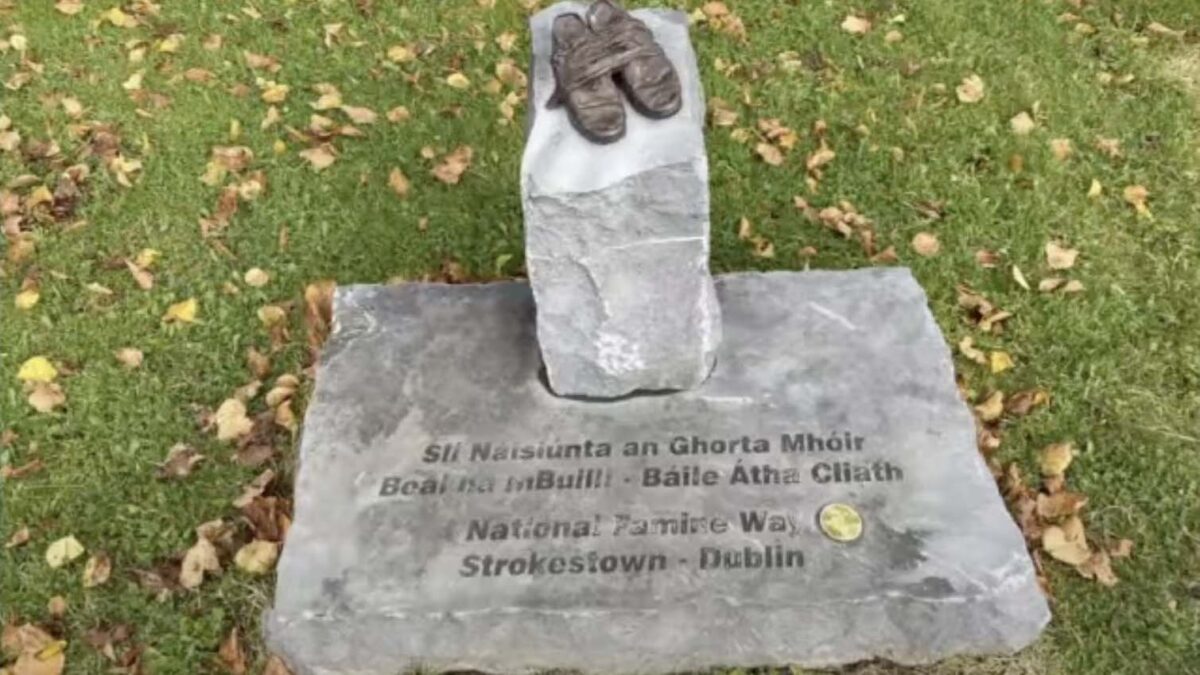Ottawa council has voted to permit a monument in a Lowertown park honouring refugees of the Great Irish Famine who came to Canada in the 1840s.
The monument will be located in Macdonald Gardens Park where evidence suggests victims of the famine were buried in a mass grave and that some remains may still lie at the site.
Michael McBane, author of Bytown 1847: Élisabeth Bruyère & the Irish Famine Refugees, described the monument project as a “multicultural moment of reconciliation.”
“It celebrates Canadian compassion as well as Irish resilience,” McBane said.
(The monument) celebrates Canadian compassion as well as Irish resilience.
Michael McBane, Ottawa author
The proposed monument, which has raised some concerns among residents of Lowertown, will consist of a pair of child-size bronze shoes that will be shipped to Ottawa from Ireland. Bronze shoes arrived in Newfoundland earlier this month as similar monuments are being erected at various Canadian sites along the path 19th-century Irish refugees took across the country.
Monuments have also been planned for Grosse-Île, Que., Quebec City, Montreal and Toronto.
Other countries, including the U.S., Australia, U.K. and South Africa, are also creating monuments to commemorate victims of the famine.
The monument project is headed by the Irish Famine Emigrant Way, an organization that commemorates those who left Ireland in the 1840s.
A city staff report says that of the 106,812 refugees who came to Canada in the summer of 1847, one fifth died en route or once they reached Canada. They often died from starvation, malnutrition or diseases such as typhus.
The motion considered by council stated that, “the Irish of Bytown-Ottawa helped shape this city. Countless Irish who came to Bytown throughout the 19th century to build the Rideau Canal, work in the lumber industry, and farm the Ottawa and Gatineau Valleys.”
The motion added that “Canadians and Indigenous people provided compassionate care to
Irish immigrants” and that “the exemplary efforts of the Anishinaabe, Haudenosaunee and
Wendat nations will be recognized” as part of the commemoration project.
Bay Coun. Theresa Kavanagh said the Irish emigrants also faced discrimination.
“This was a time when the Irish were shunned and no one was helping them out ,” said Kavanagh. “They were the ones who built our great canal, but they were forgotten.”
The monument will be paid for through fundraising by the Bytown Famine Monument Committee.
The monument is expected to be in place this summer, though no exact date has been set for its unveiling.
Prior to the May 15 council meeting, the Lowertown Community Association had expressed concerns about locating the planned monument in Macdonald Gardens Park, according to a recent CBC story.
“The Lowertown Community Association welcomes the initiative to introduce an Irish Famine monument in our city,” its representatives wrote in an April 30 letter to Mayor Mark Sutcliffe and Rideau-Vanier Coun. Stéphanie Plante.
“In addition to honouring the people from Ireland who arrived in such desperate conditions, it is an opportunity to celebrate the many individuals and groups in this city who offered their support to the Irish emigrants during this catastrophic time,” the LCA letter stated. “However, in our view, the installation of an individual monument in Macdonald Gardens Park recognizing a specific group of individuals is problematic. We have multiple suggestions for alternative sites, more accessible to visitors and with direct historical connections to the reception and care of the Irish Famine victims.”




